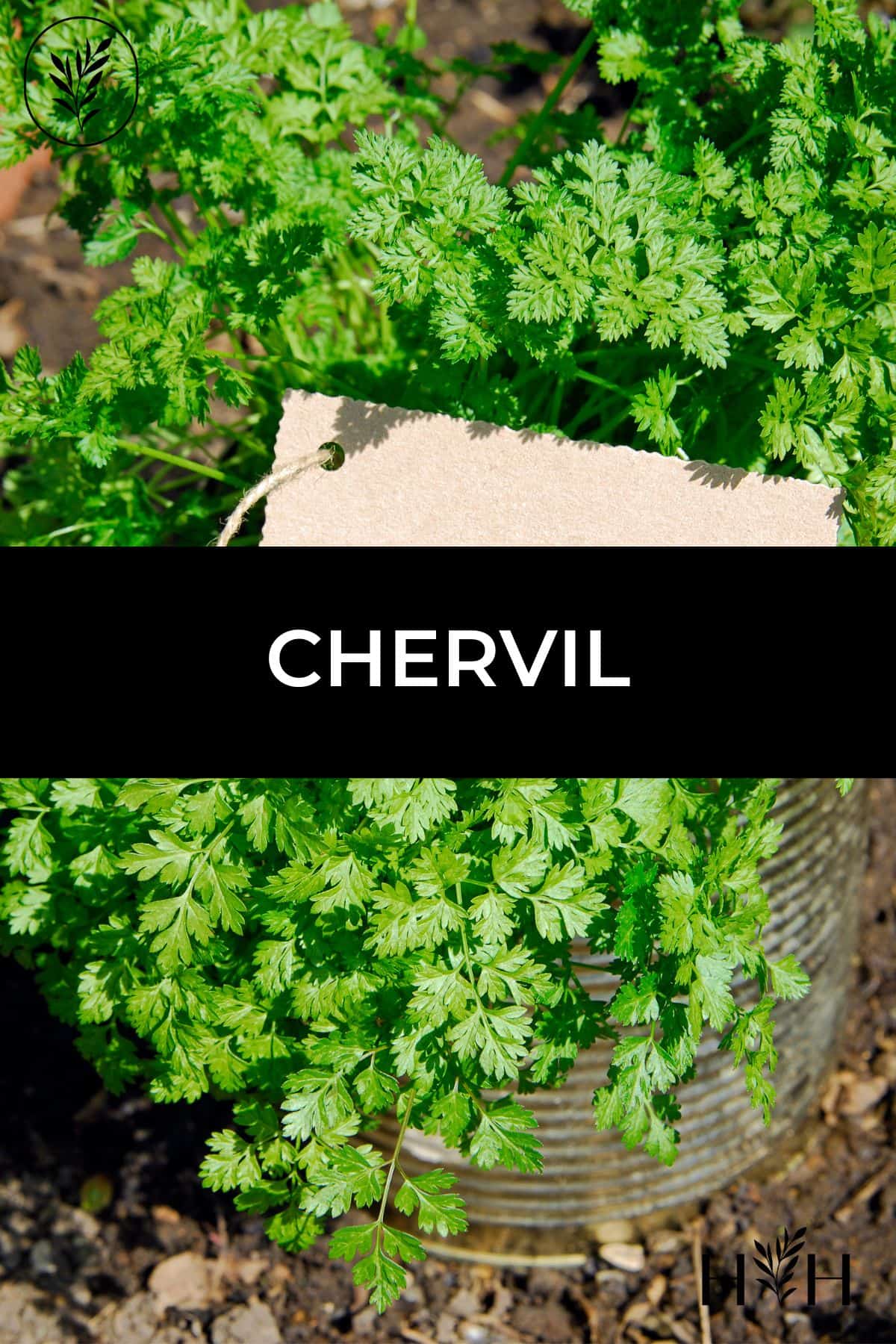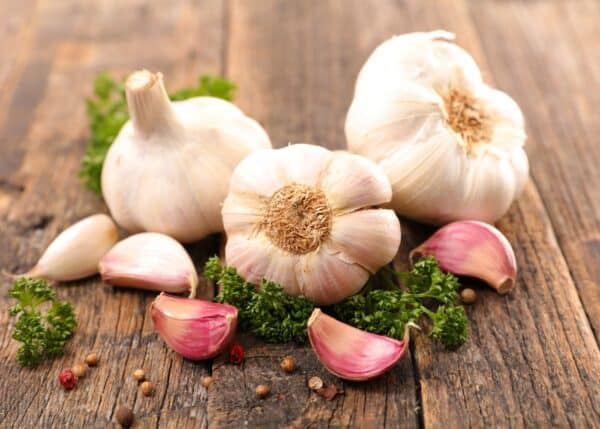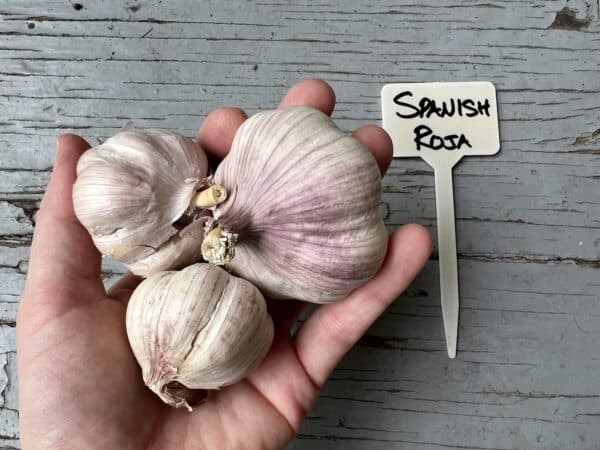Chervil is an annual culinary herb with a subtle flavor reminiscent of parsley and tarragon. It is perhaps best known for its inclusion in the classic “fines herbes” blend in French cuisine. While it can be nearly impossible to buy fresh chervil in stores, it is a simple herb to grow at home.
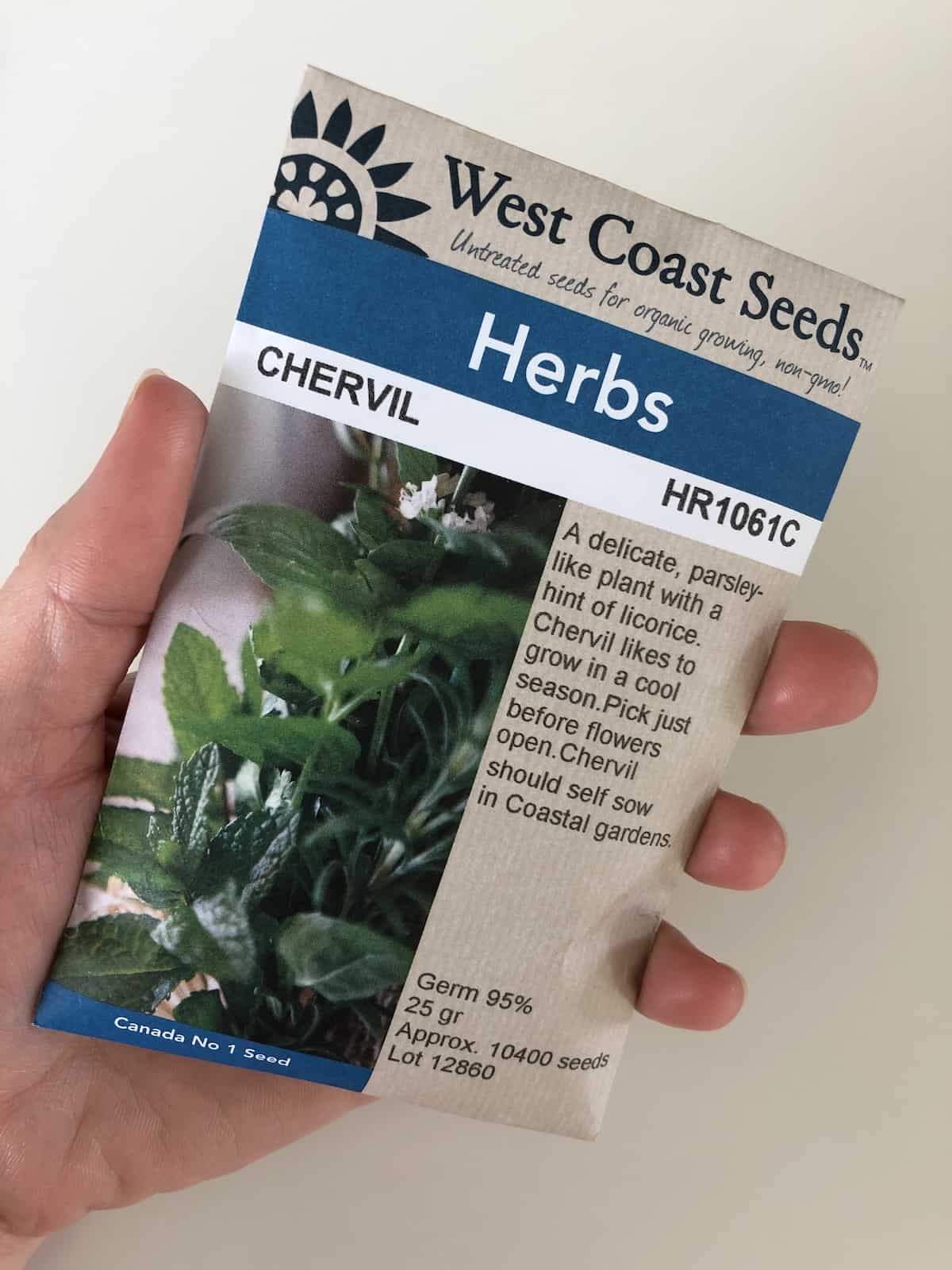
What is chervil?
Chervil is a culinary herb related to parsley – sometimes referred to as “gourmet parsley.” While more neglected in the Anglo-American kitchen, chervil has long been an important part of French cuisine: along with parsley, chives, and tarragon, it is classed as one of the “fines herbes” of traditional French cooking.
What does chervil taste like? It’s a bit like a milder version of parsley coupled with a distinctive flavour of either anise or liquorice, depending on who you ask. It’s subtle but has a little “pop” at the same time, making it perfect for more mild dishes.
What dishes can I use chervil in?
Chervil and the Fines Herbes blend are most commonly used to flavour mild protein dishes like fish, chicken, and eggs. Chervil is best with mild dishes because it is itself delicate; you wouldn’t want to mix it with strong-tasting foods because that would mask its own, unique taste. It can often be seen gently wilted atop a lovely piece of fish or perfectly-cooked chicken.
Another classic application of chervil is on omelettes. You can simply sprinkle the herbs on top or cook them into the omelettes. In fact, they go well with any kind of egg dish so, the next time you make scrambled eggs, consider adding some freshly-grown chervil. Chervil also works very well applied to subdued soups or mixed in with fresh salads. Any recipe that calls for fines herbes is potentially well-suited to chervil.
“Given its early growth, chervil is a natural with chives and dill to season spring dishes; try the three in cottage cheese or dips. Chervil butter flavours asparagus, and later on, minced chervil and chives go into lettuce salads and warm potato salad.”
Herbs: The Complete Gardener’s Guide, by Patrick Lima
Chervil is best fresh – if you cook it too long, you may ruin the flavor or even turn it bitter. Therefore, only add it to the dish at the last minute.
Pairing herbs with chervil
Chervil tends to be paired with herbs such as:
- Chives
- Dill
- Thyme
- Savory
- Tarragon
- Basil

Growing chervil in the garden
Since chervil is uncommon in Anglophone countries, you’ll probably have to grow it yourself – it’s not stocked in most stores. That’s okay! There are few things more satisfying than growing your own ingredients and mixing them into a new dish. And chervil is particularly well-suited to the home garden, as it’s best when freshly picked. This fine herb is too delicate for the supermarket anyways!
“Chervil is so delicate, it never appears in markets. To have chervil in the kitchen, you must grow it in the garden. But once established, this pretty annual sows its hardy seeds and reappears gratis every season.”
Herbs: The Complete Gardener’s Guide, by Patrick Lima
Here are some of the basics for growing fresh chervil in your garden:
- Start: Best grown from fresh seeds
- Plant: Direct sow seeds outdoors any time during the growing season (chervil works very well with winter sowing).
- Light: Partial sun to partial shade
- Soil: Moist, rich soil
- Size: 1′ tall
- Foliage: thin green stems with fine serrated flat green leaves
Chervil seeds can be hard to find at local garden centers, so check online and, if no nearby stores supply them, you can get them easily via mail-order. Chervil grows best from fresh seeds.

Details about growing chervil in the herb garden
Chervil is best grown in a partial shade area and with moist soil. This herb can be seeded outdoors in the garden at almost any point during the growing season.
What about the actual planting? Well, before anything else, you should know that chervil doesn’t transplant well, so save time and effort by putting the seeds directly in the soil of their permanent location. You can plant them indoors but make sure they’re getting at least four hours of sunlight per day.
They don’t need to be planted deep – basically, the seeds just need to be covered with a tiny dusting of soil – but make sure the seeds are spaced out from each other. Also, if you’re using a container, try to use one that’s at least one foot deep to be able to fit the plant’s long taproot.
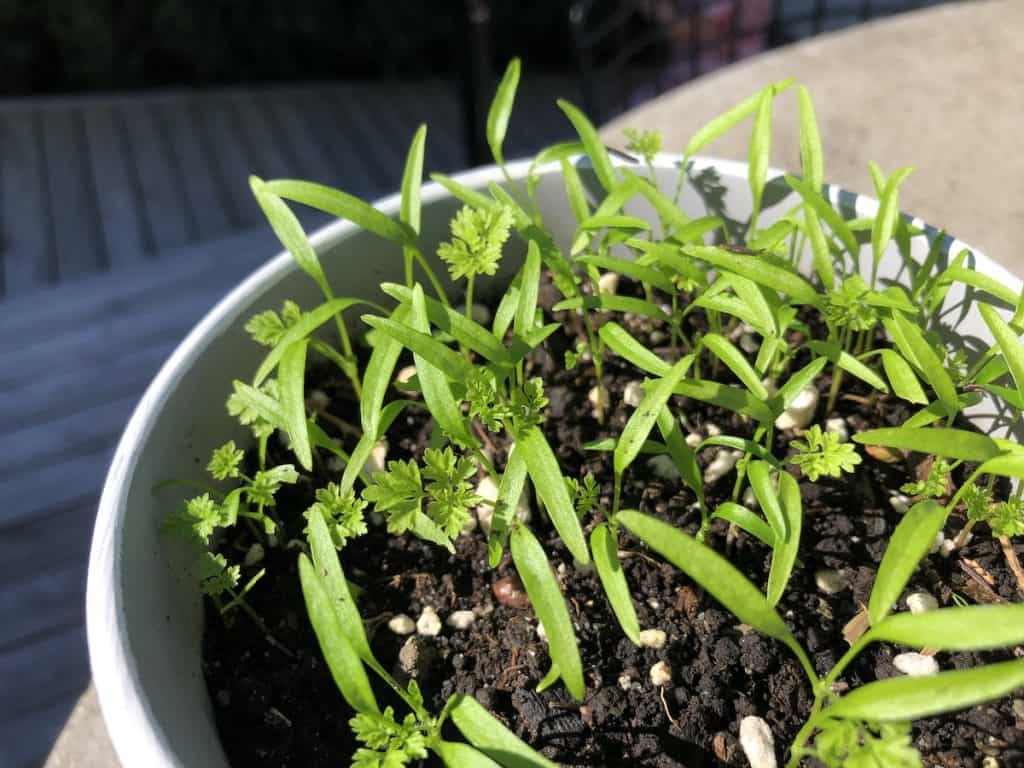
Chervil seeds can take up to 20 days to germinate (which can seem like forever!). Mine tend to take about 7 days to germinate when the potting soil is kept moist (not dry, not muddy – as above). Covering the top of the plant pot with plastic wrap or another greenhouse-like cover can help keep the moisture levels consistent until the sprouts start to become visible.
If you want a continuous supply for your kitchen, you should plant new chervil seeds once every two to three weeks. An established outdoor chervil patch will generally start re-seeding itself year-to-year if its happy in its location.
Unlike Mediterranean herbs such as rosemary or basil, chervil’s soil needs to be kept consistently moist – therefore, be sure to water frequently. Also in contrast to most other herbs, chervil doesn’t thrive in full sun. Make sure to plant it in a shaded location, perhaps alongside other herbs that grow in shade.
Chervil is an annual plant. Each individual plant has a short lifespan of less than one year, but an outdoor patch of chervil will often re-seed itself and re-appear fresh each spring. Since chervil plants are not a huge fan of the heat – the plant tends to bolt in the summer – it’s best to plant them in spring or fall. Using a cold frame, you could even plant it in the winter.
Preserving chervil
Chervil is not commonly dried for later use, as it tends to lose its flavor quickly. Chervil does freeze well when properly prepared and preserved.
Harvest your herbs just before flowering, when the leaves contain the highest amounts of concentrated oils. Gather herbs in the morning after the dew dries. In many areas, the summer solstice is a good time to harvest and freeze chervil.
Wash and chop the leaves. Mix the chopped herbs into water, olive oil, or melted butter. Pour the mixture into the sections of an ice cube tray and freeze. Once the cubes are frozen, pop them out and store them in the freezer in a labeled container.
Chervil can be frozen in water or butter cubes on its own, or it can be frozen in cubes as part of a herb mix. To make a French fines herbes blend you can use in the winter, simply chop the chervil leaves with fresh parsley, chives, and tarragon leaves. Mix and freeze in a liquid medium to make fines herbes freezer cubes.




